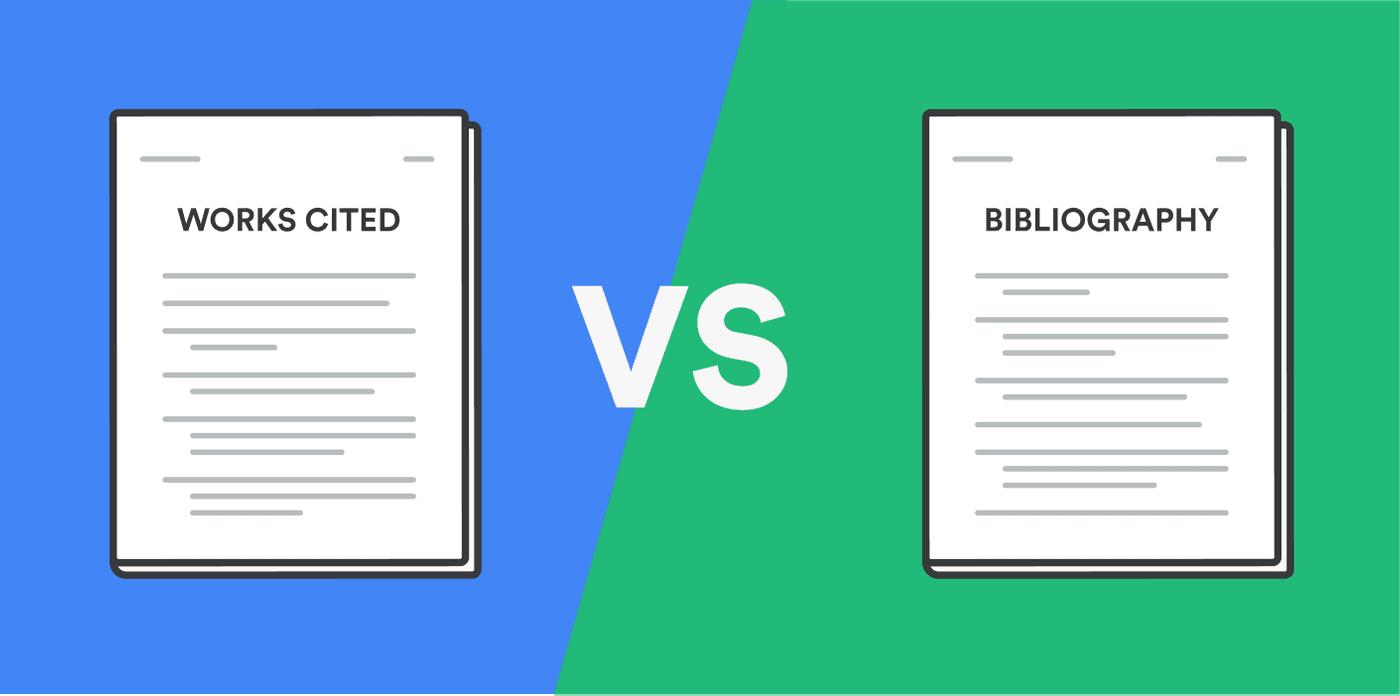Bibliography vs Works Cited: Understanding the Key Differences
When it comes to academic writing, presenting your sources accurately is crucial. Two terms often encountered in this context are “Bibliography” and “Works Cited.”
Though they might seem interchangeable at first glance, they serve distinct purposes and adhere to different rules. In this article, we’ll dissect the differences between a Bibliography vs Works Cited page, guiding you to use them effectively in your academic endeavors.

What is a Bibliography?
A Bibliography is an exhaustive list of all the sources consulted during the research phase of your writing, regardless of whether they are directly cited in the text of your document or not.
It provides a comprehensive background, showing the depth and breadth of your research. This doesn’t only include books and articles but also might encompass interviews, videos, websites, and even correspondences.
The primary purpose of a Bibliography is to offer an overview of the sources that contributed to your understanding of the topic, providing a platform for readers to explore further.
“It’s a testament to the extensive research and effort put into the project, particularly crucial when you’re delving into a detailed project like writing an essay on a book,” says Craig Mitchell, a co-author of the articles published on Every Movie Has a Lesson and Collabnix.
What is a Works Cited Page?
On the other hand, a Works Cited page, often aligned with the Modern Language Association (MLA) formatting style, is a more focused list. It includes only the sources that are directly referenced within your work. Each citation on this page should correspond to an in-text citation, ensuring that your readers can locate the exact source of your information.
The Works Cited page is crucial in avoiding plagiarism, a serious academic offense. By meticulously listing all the sources you’ve directly cited, no matter whether it’s an MLA outline, an essay, or any other assignment, you offer a clear roadmap of the information and ideas that are borrowed, allowing readers to trace the origin of your content.
Key Differences Between a Bibliography and a Works Cited Page
Scope of Sources:
- Bibliography: Includes all materials read or consulted, even if they aren’t directly cited in your paper.
- Works Cited: Lists only the sources that are specifically cited in your paper.
Purpose:
- Bibliography: Demonstrates the extent of your research and offers additional reading materials to the reader.
- Works Cited: Provides a clear and concise list of the sources that directly influenced your work, ensuring proper attribution and avoiding plagiarism.
Formatting Style:
- Bibliography: Can be a requirement in various formatting styles but is most commonly associated with the Chicago Manual of Style.
- Works Cited: Typically associated with MLA formatting, though similar concepts exist in other styles (e.g., References in APA format).
Placement and Titling:
- Bibliography: Usually titled “Bibliography” or “References,” depending on the style guide, and placed at the end of the document.
- Works Cited: Specifically titled “Works Cited” in MLA formatting and appears as the final page of the document.
How to Choose Between a Bibliography and a Works Cited Page
The choice between a Bibliography and a Works Cited page largely depends on the requirements of your assignment and the formatting style you are instructed to follow.
Here are a few tips:
Understand the Assignment Requirements: Always check the guidelines provided by your instructor. Some may specifically ask for a Bibliography or a Works Cited page.
Know Your Formatting Style: Different academic disciplines prefer different formatting styles. For instance, humanities often use MLA or Chicago, while social sciences might use APA.
Consider the Scope of Your Research: If your research is extensive and you wish to showcase the breadth of your resources, a Bibliography might be more appropriate. For a more focused paper, a Works Cited page could suffice.
Best Practices for Creating a Bibliography or Works Cited Page
Regardless of which one you are required to include, follow these best practices:
Be Consistent: Stick to the formatting style guidelines for font, spacing, indentation, and the order of information.
Stay Organized: Alphabetize your entries by the authors’ last names. If there’s no author, alphabetize by the title of the work.
Double-Check: Ensure that every in-text citation has a corresponding entry in your Works Cited page and vice versa. For a Bibliography, ensure you include all sources consulted.
Understanding the differences between a Bibliography and a Works Cited page is crucial for any student or academic writer. While they serve similar purposes in acknowledging sources and avoiding plagiarism, they differ in scope, intent, and format.
By mastering the use of these tools, you not only adhere to academic integrity but also enhance the credibility and depth of your research. Always remember to consult your assignment guidelines and adhere to the specific formatting style required, ensuring your academic work is both professional and ethically sound.

